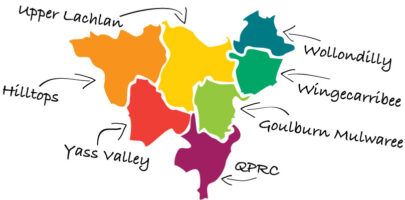Moss Vale Hub: Great Southern Line
Moss Vale Refreshment Rooms 1890 (left) and 1935 (right). Berrima Image Library, Berrima and District Family Historical Society.
Character
Moss Vale Hub was a central location in the southern highlands farming district. Its identity centred on goods and passengers but most particularly passengers. It was an important refueling stop between Goulburn and Sydney and so one of the major stops between Melbourne and Sydney. It was also an important stop for holiday makers in the Southern Highlands including successive Governors of New South Wales. Accordingly station amenities including Refreshment Rooms, waiting rooms and Vice-Regal waiting rooms were a significant part of the station, its work and character. Moss Vale gained refreshment rooms when Mittagong lost theirs. As with all other stations, the refreshment rooms were initially managed privately but taken over by NSWGR during the War and following years. Moss Vale refreshment rooms were taken over by NSWGR in 1917. Electric lighting was installed in 1912 (ARHSNSW lunch club notes). Duplication of the line was completed in the early years of the First World War. Railway workers camped adjacent to the town played an important role in War fundraising activities (Trove newspapers). A goods yard was also an important feature of Moss Vale traffic activities. Moss Vale was within the Goulburn Loco District and employment cards suggest that this was the same with Traffic and Per Way Departments.
Homefront character
Moss Vale station like others on the line, was the site of welcomes and farewells which included the local band. But it was also a major stop on the Great Southern Line for Troop Trains and those carrying wounded soldiers. The Blue Gum Girls regularly met troops and provided concert entertainment as well as gifts to wounded soldiers. Another homefront character of the Moss Vale area with its large early pastoral settlement houses, was that it included several convalescent homes for soldiers. Moss Vale and smaller stations on the line were stops for these.
Stories
The few stories collected from Moss Vale and nearby stations are about employees in the Traffic department (porters, signalmen) and fettlers. Fettlers worked along the line rather than at stations. They were employed by the Per Way department according to district – eg Goulburn, Metropolitan – though they lived in a particular location, hopefully as close to their work as possible. One story fragment concerns a bridge carpenter whose address when he enlisted in 1915 was ‘Railway works, Moss Vale’. Bob McKillop notes the elaborate uniforms of porters which included indications of rank (caps, braid etc) coupled with their predominantly manual service work; sweeping platforms, unloading luggage, assisting passengers and ‘doing any chore beneath the dignity of those directing them’. He also notes that fettlers, by contrast, worked in isolated conditions and were relatively independent. Their hard physical work included replacing sleepers and rails and shoveling and packing the ballast (often blue metal) that supported them. ‘their tools were round-mouthed shovels, hammers, adzes and crowbars, a jigger to bore the sleepers, and rail tongs’ (see appendix ii).
We acknowledge Aboriginal people as the traditional custodians of the lands where we create, live & work.
© 2026 Southern Tablelands Arts. All Rights Reserved






